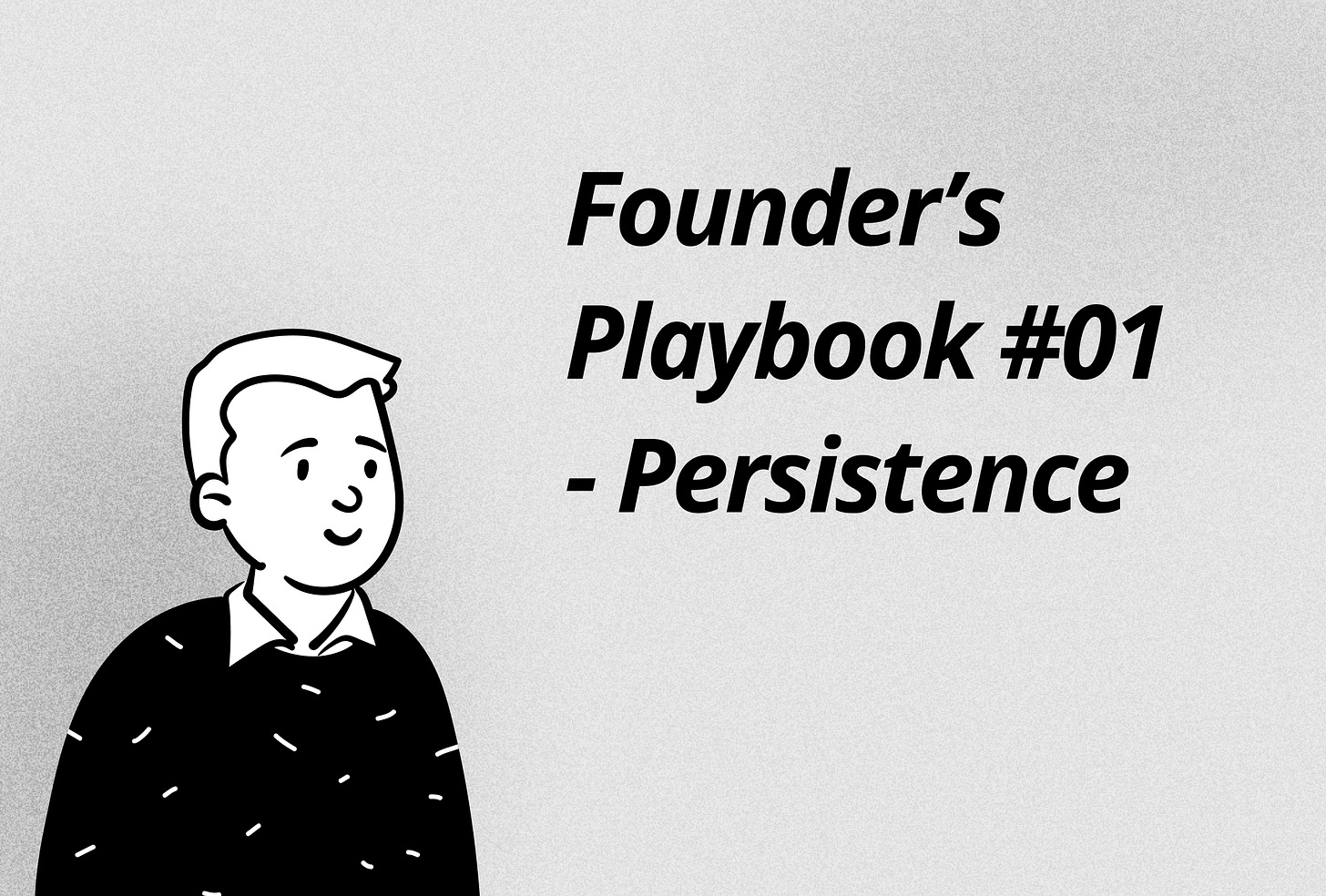Founder's Playbook #01 - Paul Graham on Why Persistence Wins
What is the right kind of stubborn? Here's what Paul Graham, co-founder of Y Combinator, has to say
Reading time: 4 mins
If you can’t read anything else in this post, here’s a one-line summary of the entire thing:
Persistence is the ability to keep adapting and pushing forward, while obstinacy is simply refusing to change, even when it leads nowhere.
People of both of these traits - persistence and obstinacy - have a core underlying principle - “not giving up“. It is surprising how they could not be more different if you dig deeper into their internal structure.
The fine line between persistence and obstinacy
Let’s see two simple examples to explain the difference between the two.
Amazon’s early days were full of pivots - from selling books to becoming the “everything store“, many businesses/projects launched and failed.
Contrast with that Kodak, a company that refused to embrace the digital camera. Their obstinacy in clinging to film ultimately left them irrelevant in a world they helped create.
Netflix (pivoted from DVDs to an online catalogue) and BlackBerry (did not pivot when the world moved towards touchscreen phones) are equally juxtaposed.
When persistence goes wrong
You could keep pushing, but that can often lead you to stay stuck. Sometimes, you have to listen, understand and change a few things:
➔ When progress stalls, it’s easier to keep pushing than to admit something isn’t working
➔ Fear of failure makes us cling to the familiar, even when it’s clearly not the solution
➔ Lack of feedback or direction can lead to persistence in the wrong areas
Graham’s advice is clear:
Persistence is not about having unlimited grit or energy. It’s about accepting that growth is rarely linear.
Today’s entries for your Founder’s Playbook
Not giving up can shape your path - here’s how to make it work for you, not against you.
➔ Pause and reassess. When progress feels gridlocked, take a step back. Revisit your original goals and ask if your current actions are still aligned with where you want to go
➔ Experiment with new approaches. If one strategy isn’t working, try something different. Launch small tests or pilots to explore alternative solutions without risking too much. It’s okay to let go of ideas that aren’t working
➔ Ask better questions. Instead of pushing harder, focus on asking why something isn’t working. Understanding the root cause can reveal opportunities to pivot or adjust
➔ Get outside perspective. Talk to advisors, customers, or peers who aren’t involved in your day-to-day work. Fresh perspectives often uncover blind spots
➔ Focus on first principles. Break down the problem into its most basic elements. Simplifying complex issues helps you rebuild solutions with more clarity
There are two amazing thing I read in Graham’s essay (on which this post is based) titled The Right Kind of Stubbornness:
“Five distinct qualities — energy, imagination, resilience, good judgement, and focus on a goal — combine to produce a phenomenon that seems a bit like obstinacy in the sense that it causes you not to give up. But the way you don't give up is completely different. Instead of merely resisting change, you're driven toward a goal by energy and resilience, through paths discovered by imagination and optimized by judgement.”
“Energy and imagination make a wonderful combination. Each gets the best out of the other. Energy creates demand for the ideas produced by imagination, which thus produces more, and imagination gives energy somewhere to go”
What’s one area where you’ve been pushing forward but need to step back and reassess? Try a different strategy this week and see what changes.
Thanks for reading. If you find this post useful, I’d love it if you shared it with someone that might find it helpful. And consider subscribing if you haven’t already.
Until next week, cheers!





